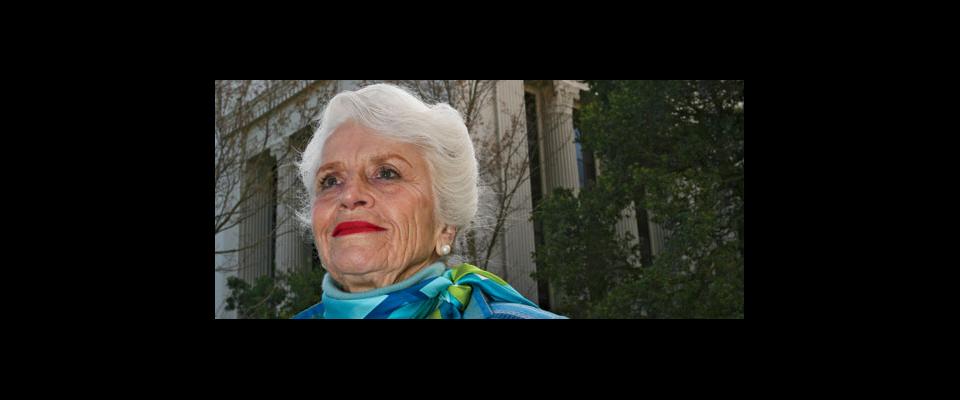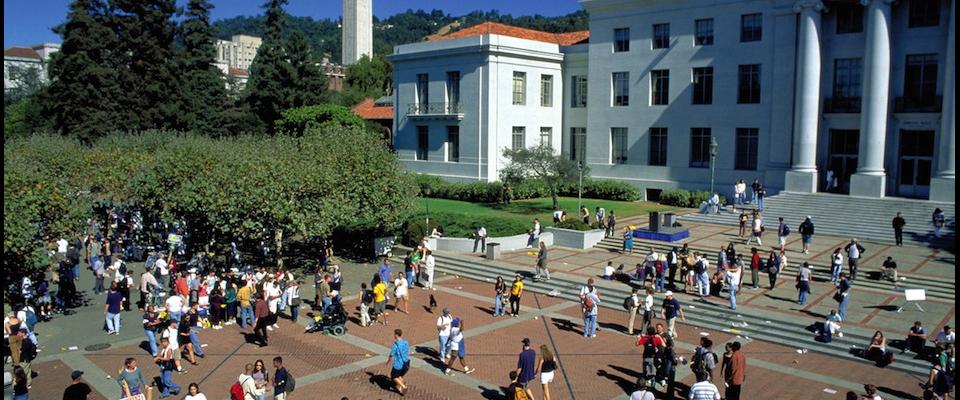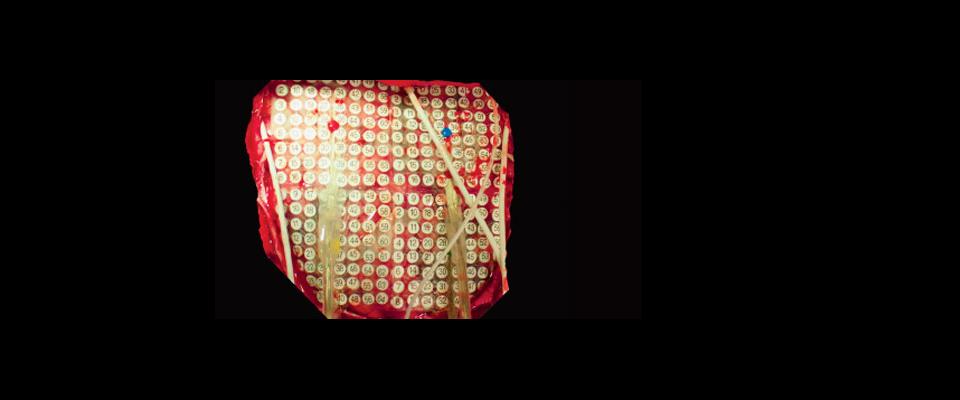At Osher Lifelong Learning Institute, adults fire up the old neurons.
In a conference room in University Hall, Professor Michael Thaler’s bioscience class listens intently as he describes research on the genetic manipulation of longevity, his black crew-neck sweater and white goatee lit by the glow of an overhead projector. When he shows a graph upside-down and his students call out, he quips, “Very observant. It’s a brain test,” to laughter all around.
The 80 students seated in tiered rows are not your typical undergraduates, but adults 50 and older enrolled in Berkeley’s Osher Lifelong Learning Institute (OLLI). For them, Thaler’s class is a kind of brain fitness center, where a mental workout can literally change the brain’s structure and chemistry. While they jot notes and absorb the distinction between life span and life expectancy, the students’ neurons are sprouting new dendritic branches, synaptic connections are strengthening, and neurochemicals are increasing.
Research over the last 40 years has produced a new vocabulary of the brain, giving us such words as neuroplasticity (the idea that, contrary to previous assumptions, the brain can change in response to stimulation well into old age). Studies have shown that both physical and cognitive exercise have neuroprotective effects that slow or prevent cognitive loss, blasting the myth that mental decline is inevitable.
As baby boomers enter their 60s and as Alzheimer’s rates soar, improving brain fitness may become our new mantra, generating as much science (and marketing spin) as the movement for physical fitness. But though many people recognize the value of mental exercise in preventing cognitive deterioration, most don’t know exactly what effective mental exercise entails. According to a 2006 survey conducted by the American Society on Aging and the MetLife Foundation, when asked how they stayed mentally fit, most respondents said that they read and/or exercise. These activities are important, but current brain research presents a more nuanced set of ingredients for brain health, including new and challenging mental tasks, good diet, exercise, social connection, stress reduction, and varied activities.
Marian Diamond, a professor of neuroscience and anatomy at Cal’s Department of Integrative Biology and a pioneer in research on brain enrichment, cautions, “People say, well, they’re doing crossword puzzles. That’s great, but if they’ve done crossword puzzles of the same kind for a year or so, that’s not a challenge. You need something that’s a little harder, where you have to work.”
In University Hall’s conference room and in similar venues across the country, older adults can find the kind of positive, interactive environment that encourages brain development. There are about 400 distinct lifelong learning programs in the United States, including more than 100 OLLIs at colleges and universities nationwide that were seeded by grants from philanthropist Bernard Osher. The Berkeley OLLI offers 15–20 courses each fall, winter, and spring, led by faculty and other experts, on everything from photography, Shakespeare, and petropolitics, to “Parallel Universes in Science, Myth, and Art” and “The Greening of the Bay Area.” Director Susan Hoffman says, “We encourage OLLI members to start study groups, writing circles, interest area groups. Everyone is encouraged to volunteer and help build the program.”
Deborah Lichtman is one such volunteer who was attracted by the potential for intellectual stimulation and a sense of community. Initially interested in taking a class or two, she quickly became more involved because she found the program “really vital and exciting.”
Lichtman currently serves on the institute’s curriculum committee and was active in the “Wartime, Our Times” story project. A collaboration between the OLLIs at Berkeley and San Francisco State, KALW radio, and journalism students at Phillip and Sala Burton Academic High School in San Francisco, the project put young students in touch with older people who had experienced war. Journalists, technicians, and a creative writing instructor trained the students to conduct, record, and edit interviews. The resulting documentary will air on Memorial Day.
This is not your traditional adult education. It’s innovative, flexible, engaged. OLLI has partnerships with a number of local organizations, including the Aurora Theatre Company in downtown Berkeley. Students attend performances and then have a chance to talk with the director, writer, or an actor. Last winter, members of a writing class and a singing class gave a joint performance at a local jazz club, Anna’s Jazz Island. A course on digital culture, taught at the Pacific Film Archive on the Berkeley campus, included a mix of PFA members, students from OLLI, and Cal undergraduates.
Programs such as OLLI are attempting to define a new way of aging that is community based and proactive. The baby boomers’ population bulge and increased life expectancy will soon combine to produce a surge in the number of Americans over 65, from 36.8 million in 2005 to an estimated 86.7 million in 2050. As a result, brain health is quickly becoming more than a matter of personal jitters; it is an imperative of public policy, essential to lessening the coming burden of an aging population on our health care system.
Lifelong learning institutes must continue to adapt their offerings to reflect new research in neuroscience. But there’s also another challenge: Diamond and her colleagues found that although they could strengthen neuronal growth in rats by enriching their environment with toys and sociability with other rats, when the subject rats were also held, they lived as long as 900 days rather than their previous 600, and their brains continued to change. To the list of factors contributing to brain health, then, Diamond adds love. “And why,” she asks, “would you want to live without love?”




















